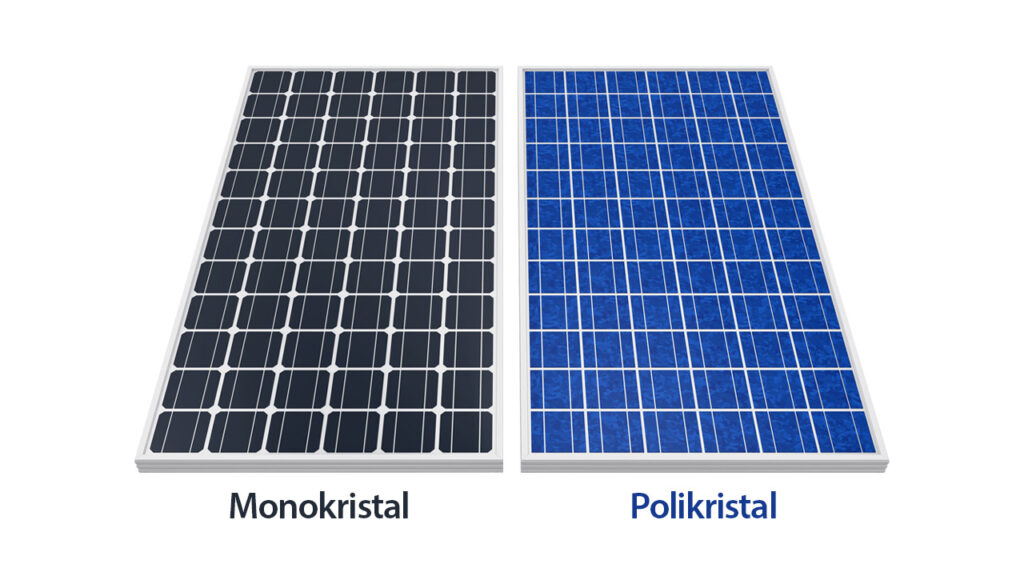Solar panels, most commonly used in commercial or residential installations, are divided into three types: monocrystalline silicon, multicrystalline silicon and thin film. Here is a brief description of each:

(1) Single-crystal silicon: Most efficient
Monocrystalline solar panels are often touted as the most efficient option for large energy systems on commercial and residential properties. But panel sizes can vary; therefore, single crystals can also be used for small devices.
Advantages
– Because they are made of high-purity silicon, their efficiency increases by 15% to 22%.
– They do not require larger areas than polycrystalline and thin film panels.
– Single crystal panels can be used for more than 25 years as they have the stable and inert properties of silicone.
Disadvantages:
– Because of its complexity and high price.
– Snowfall is not a suitable option for cold climates as it can damage solar cells and cause system failures.
(2) Polycrystalline silicon: The most economical
As the name suggests, multicrystalline solar panels consist of multiple pure silicon crystals stacked together. However, more crystals does not always mean better.
Multicrystalline panels are actually less efficient than monocrystalline panels. However, the power options from 5W to 250W and higher are ideal for small and large installations.
Advantages
- They are cheaper than single crystals because the manufacturing process is simpler.
- The melting process produces less waste and is environmentally friendly.
- Durable, like monocrystalline solar panels, they are a good option for budget-friendly homeowners.
Disadvantages:
- Low efficiency (13% to 17%) because the silicon used is of low purity.
- It occupies the same amount of space as a single crystal battery to produce the same power level.
(3) Thin film: Recommended to provide energy for transportation
Although lightweight and easy to transport, silicon-free thin-film photovoltaic cells are the most inefficient type of solar panels. Use them only for installations that don’t require a lot of power generation; flexibility and portability are two key factors of this type.
Advantages
– Easier production and lower costs.
– Ideal for solar-powered transportation applications such as panels mounted on bus roofs or refrigerated trucks used for cooling.
Disadvantages:
– Rooftops are not a good option as they require too much space to generate enough solar energy.
– They are weaker than crystalline panels, so they have a faster degradation time. Membrane panel installations only provide a short-term guarantee and homeowners should consider this, especially depending on how long they will be in the home.